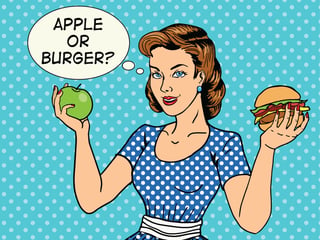I’ve tried everything. Why doesn’t my diet work?
When you open your newsfeed, you see advertisements and personal testimonies from friends and family with weight-loss and dieting successes. That alone can be the motivation needed to give something new a try, but not everything works for everyone. Various weight-loss systems have time-sensitive supplements, complex counting systems, and other essential guidelines that you must follow strictly to be successful.
“Diets” Raise Questions and Lead to Failure
 The next fad diet may work, but what happens afterward? Do you continue that system forever? Should you follow a program designed for weight loss if you’re no longer trying to lose weight? Diets seem to always pose more questions than answers, and the “I’m going on a diet” phrase will inevitably lead to failure.
The next fad diet may work, but what happens afterward? Do you continue that system forever? Should you follow a program designed for weight loss if you’re no longer trying to lose weight? Diets seem to always pose more questions than answers, and the “I’m going on a diet” phrase will inevitably lead to failure.
Most people will transition “off the diet” when they reach their target weight, eventually returning to the previous eating habits that initially caused the weight gain. This up and down continues the yo-yo weight-loss cycle. This is why “dieting” doesn’t work.
Some people can see results by making a few healthy choices or decreasing calories. Eventually everyone will hit a plateau, but the answer isn’t to further restrict nutrient intake. Long-term dieting can have a prolonged negative effect on metabolism, making it much more difficult for the body to use nutrients.
Most people prefer restrictive diets in which they decrease total calories or put a limitation on types of foods consumed. These include but are not limited to fat-free, sugar-free, no carbohydrates, gluten-free, or protein-free. Others try overindulgent diets in which they eat nothing but one type of food. These diets are like the cabbage soup diet, protein-only diets, or having nothing but juices or meal-replacement shakes. However, both restrictive and overindulgent diets contribute to inadequate essential nutrients.
Make a Healthy Lifestyle Change
Let’s be clear. A diet isn’t a restriction or an overconsumption of any foods. A diet consists of your daily intake of nutrients. To be successful this year, you need to ask yourself why you want to diet. Are you looking to temporarily lose weight, or are you looking for a long-term solution? If you’re looking for short-term weight loss, continue to check Facebook for inspiration. If you are ready to stop the yo-yo “dieting,” you are ready to make a healthy lifestyle change.
Rethink your daily diet to include foods that will satisfy your hunger and foods you’ll enjoy. Say goodbye to the old diet foods that you used to endure and say hello to flavorful, real, whole foods. Instead of depriving your body of the energy and fuel it desperately needs to function, feel free to eat a meal that consists of at least 300 calories. Just keep in mind that dieting alone never works for long. Take that as a sign to progress to the next step and gradually add activity and exercise into your daily routine.
Nutrition Help from NIFS
For more nutritional advice, a NIFS Registered Dietitian can help give you direction and focus your energy in a positive way. The My Nutrition Coach mobile app allows members to interact daily with a Registered Dietitian at NIFS. You will receive feedback, suggestions, and information on ways to improve your nutrition and help you achieve results.
To get started with My Nutrition Coach, contact NIFS Registered Dietitian Angie Scheetz at ascheetz@nifs.org or by phone at 317-274-3432 ext. 239.



 Juicing is the process of extracting juice from the flesh or the pulp of a fruit or vegetable. This technique has been used for hundreds of years as a way to maximize nutrient intake by drinking only the juice of various vegetables and fruits. I wanted to get the New Year off to a healthy start and reset my digestive system, so I researched how to complete a “safe” juice cleanse.
Juicing is the process of extracting juice from the flesh or the pulp of a fruit or vegetable. This technique has been used for hundreds of years as a way to maximize nutrient intake by drinking only the juice of various vegetables and fruits. I wanted to get the New Year off to a healthy start and reset my digestive system, so I researched how to complete a “safe” juice cleanse. This time of year many people are looking to drop excess weight. In their desire to see rapid results, many start a supplement program such as
This time of year many people are looking to drop excess weight. In their desire to see rapid results, many start a supplement program such as  I am a recovering perfectionist. It’s an ongoing struggle, but every day I get more comfortable with not being the best at everything. And every day, I feel a little happier because of this attitude. Here are my thoughts as to why.
I am a recovering perfectionist. It’s an ongoing struggle, but every day I get more comfortable with not being the best at everything. And every day, I feel a little happier because of this attitude. Here are my thoughts as to why.
 Whether we like it or not, we have an epidemic on our hands. Whether you are overweight, obese or not, classifying obesity as a disease will affect you, if it hasn’t already. Changes are in order. Simply classifying obesity as a disease does not make the necessary changes automatically occur and I’ve already expressed my concern with the direction I think this could go.
Whether we like it or not, we have an epidemic on our hands. Whether you are overweight, obese or not, classifying obesity as a disease will affect you, if it hasn’t already. Changes are in order. Simply classifying obesity as a disease does not make the necessary changes automatically occur and I’ve already expressed my concern with the direction I think this could go.